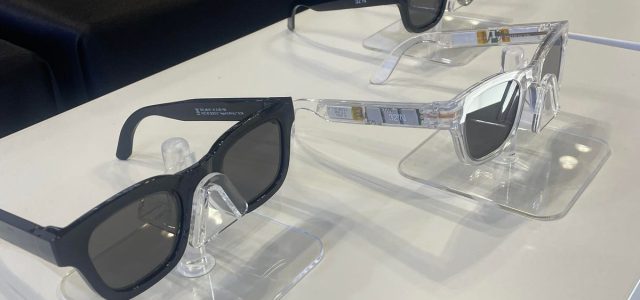
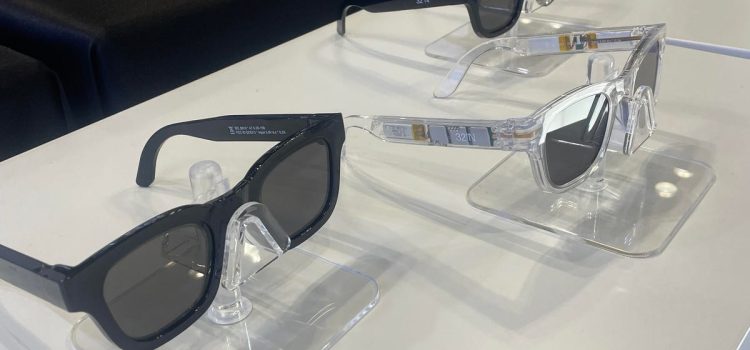

The vision and eye care business is a unique blend of two industries: health care and fashion. In New York City this month, this was on display fully at the Vison Expo East, an event for eye care providers, designers, vision business leaders and eye-tech aficionados. (There’s also a Vision Expo West.) Think of it as the CES of eye care, but this time it was off the Hudson River and with raised champagne glasses to the most stylish eye frame designs.
I got an opportunity to go to the Vision Expo because I was in line to view one particular pair of specs: adaptive sunglasses that turn into reading glasses when you want them to, and back into regular sunglasses when you don’t want them to. They’re called 32 Degrees North, and we wanted to see if the glasses could live up to their claims.
I couldn’t give 32 Degree North glasses, made by Israeli company DeepOptics, a true test since I don’t have presbyopia – an inevitable vision problem people develop around age 45, when natural changes to the lens of the eye make looking at things up close blurry. So I tried them on, toggled with the different viewing modes and spoke with the people behind the tech.
Examples of when this may come in handy out in the real world is when you’re reading outside, you’re walking around a new city trying to read directions on your phone or if you’re spending any of your several hours of smartphone time outside, where you’d normally use your reading glasses but you have to wear sunglasses instead.
What the glasses look like and what they’re made of
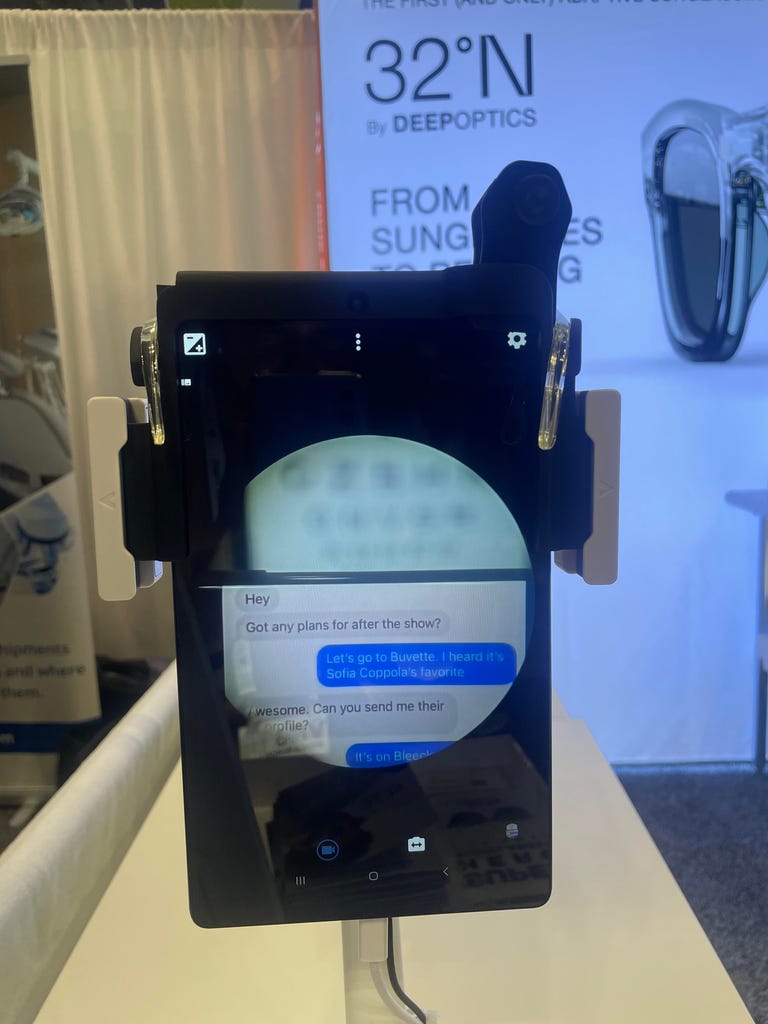
An example of how the glasses bring near distance into focus. As we age, the lens of the eye becomes less flexible, which is why most people start to notice it’s harder to see things up close in their 40s.
32 Degree North glasses come in two frame designs: a narrower fit (Wharton) and a “regular” fit (Muir). There are two colors to choose from: black and clear. I thought the black pair looked like regular sunglasses, but the clear color does expose all the “tech” running through these glasses, notably on the sides, making it a good aesthetic choice for people okay the spy-kids look, but not if you want your sunglasses to look like typical sunglasses.
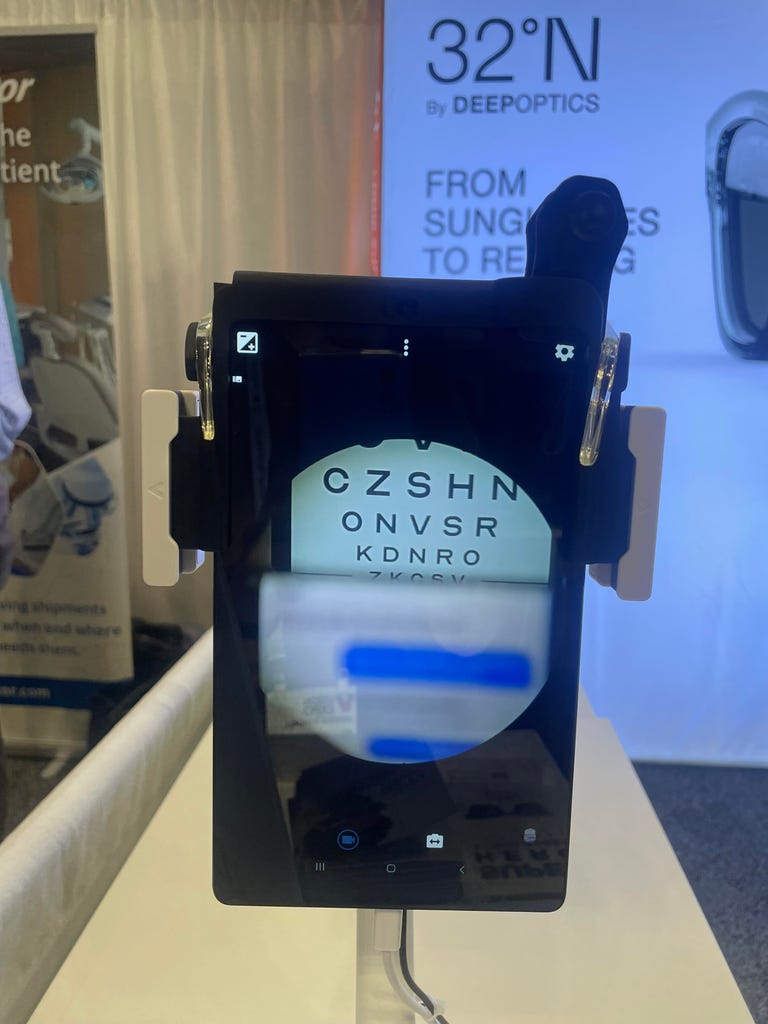
An example of the sunglasses in distance-viewing or regular mode. If you’re nearsighted and need a prescription to see things far away, you’ll need to wear your contacts with 32 Degrees North sunglasses since they can only correct for presbyopia.
The sunglass lenses in the glasses are made of Deep Optics’ pixelated liquid crystal, which folks behind the company described as a similar idea to the LCD in your LCD television, except it functions as a lens. The crystal layer creates an “unlimited number of dynamic, high-quality lenses,” the company says, which can be changed into your reading glasses prescription any moment when you swipe or touch your glasses, up to + 2.5 diopters (you can always adjust your prescription in the paired app). Powers up to 2.5 diopters should cover most people’s presbyopia prescription, though you should always confirm with your eye doctor.
Adjusting your vision with an app and a tap
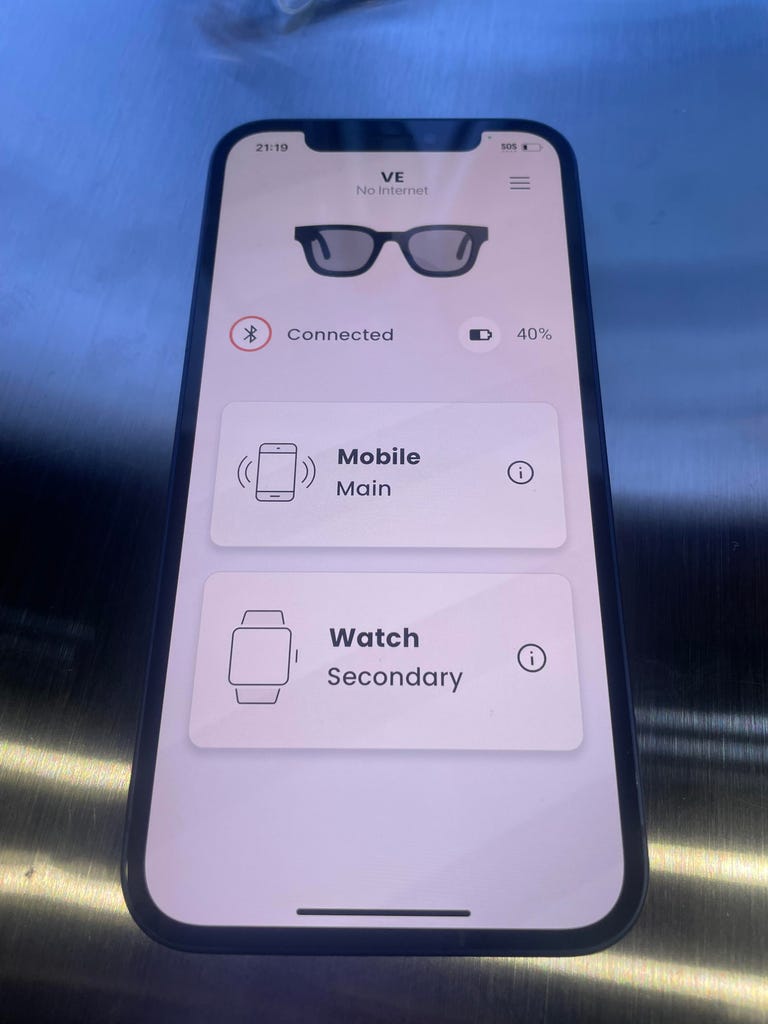
An example page of the paired app that comes with 32 Degrees North glasses.
To set up these glasses, you’ll need to work in the paired app from Deep Optics. From there, you can set your presbyopia prescription (and go back in to adjust if needed).
Once you have your prescription set, you’re set to use them. To turn your glasses from regular sunglasses to reading glasses, swipe your finger back along your temple toward your ear. To put them back into distance-viewing mode, do the same thing.
For quick near-viewing needs, where you’d have to rifle around for your reading glasses for just a short glance at your phone, you can press the side of the glasses and release when you’re done.
In terms of battery life, these glasses can last up to a day of “normal” use and up to 5 hours of “active” use, which is when reading mode is turned on.
Who might want to buy these, plus what they mean for the future
Whether you should swap out your regular sunglasses and reading glasses combo for this $849 pair of high-tech specs is completely up to your taste, how much time you spend outdoors, and probably, how bothered you are by needing to fish for reading glasses for quick tasks. (Also, there’s a difference between losing a $10 pair of reading glasses and leaving behind a $800 a pair, so maybe keep past experiences in mind.) We can’t speak yet for how these glasses work compared to traditional reading glasses.
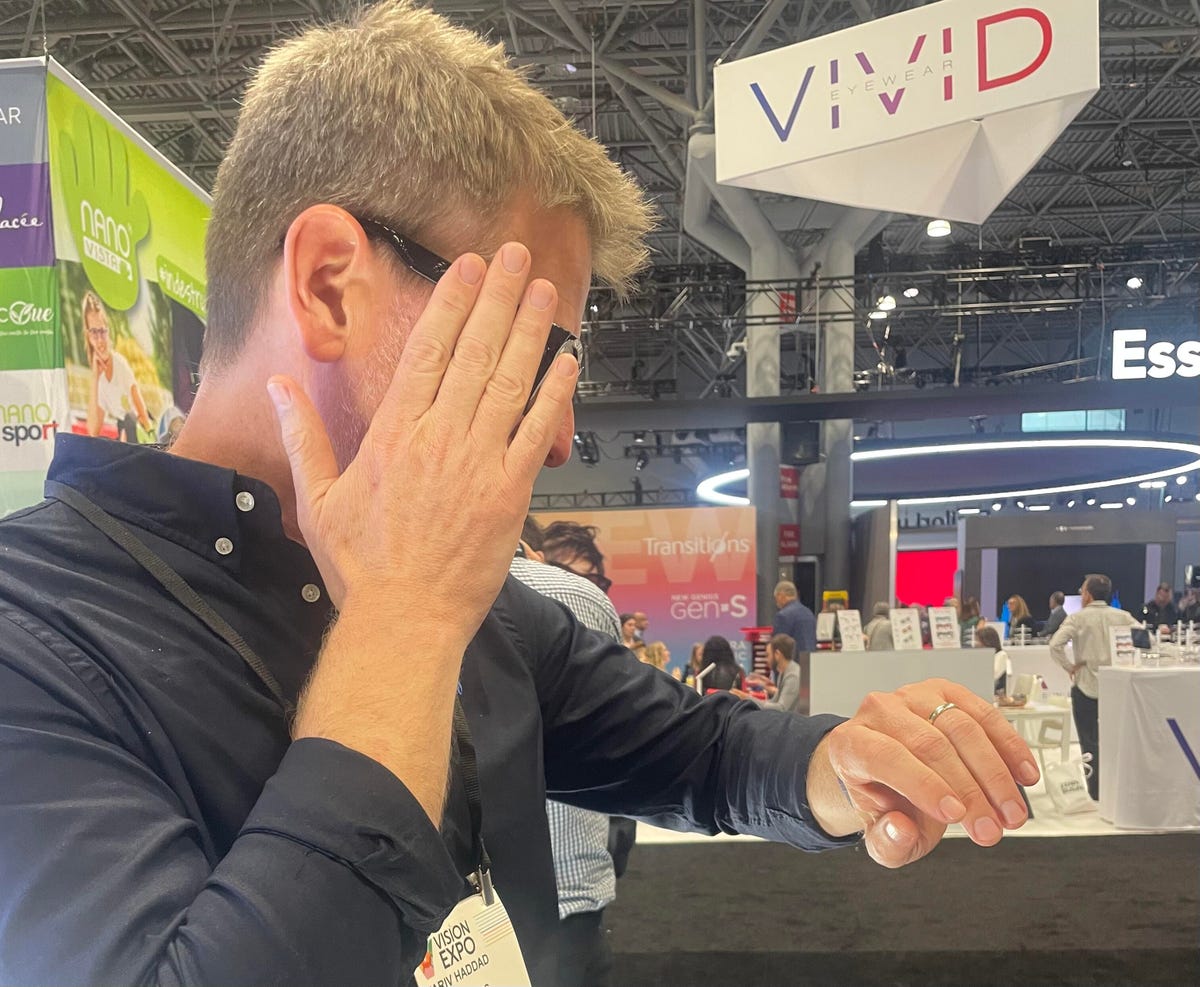
For quick glances at something up close, as Deep Optics CEO Yariv Haddad is demonstrating, you can press on the side of your glasses, then release it for normal viewing mode.
But if you’re a vision aficionado who benefits from reading glasses, you want to stay up-to-date on the latest tech and you’ve got a little money to burn, these may be a good option for you. There’s also a 30-day refund period after you buy a pair of 32 Degrees North, so you can get your money back if you don’t like the glasses. (Make sure you’re returning them in the same condition, though.)
Selfishly, because I don’t use reading glasses yet, I’m most excited about what the invention of 32 Degrees North glasses could mean for “glasses technology” as a whole. In addition to the flash, design and technology that pours into a sweet pair of specs, we are in the middle of what some call a myopia “epidemic,” with ongoing research on how to stop nearsightedness in kids and an increasing need to meet glasses and contact prescription demands from those 40% or so of us who need vision correction for seeing at a distance.
Yariv Haddad, CEO and cofounder of DeepOptics, said that technology like 32 Degrees North that caters to myopia or blurry distance vision are “on the roadmap.” There are different combinations of eyewear purposes, like standard multifocal or progressive glasses that include part distance-viewing, part near-viewing lenses; there are also transition glasses, which are regular glasses that “transition” into sunglasses once you step outside (32 Degrees North glasses don’t do this). Technology that allows for more fine-tuning of eyewear may one day hit the sweet spot of what people want in terms of total vision care and style.
